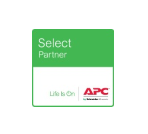Flash storage is now mainstream thanks to technology improvements, cost savings and ever increasing I/O demands from business applications. All Flash Arrays (AFAs) offer much faster data access speeds than traditional hard drives (more than 100 times faster) and are more durable because they contain no moving parts and are less prone to mechanical failure. They typically take up less space, require less energy to power than spinning disks and produce less heat which greatly reduces cooling costs too. In addition to these physical benefits, AFAs are generally easier to install and support.
All these factors explain why organisations are increasingly turning to flash storage solutions. Should you do likewise and migrate your storage infrastructure to an all-flash array? Not necessarily, there are a number of considerations to factor.
Categorise your data
A good chunk of your organisation’s data is either not accessed frequently enough or is not important enough to warrant the price and performance premium associated with an all-flash array. Such data is a prime candidate for secondary storage media such as less expensive disk drives or tape.
Ask your bank for an old statement from years ago and you’ll likely have to wait a day or two to hear back. You’ll undoubtedly have similar data within your organisation - historical documents or images that are probably archived and accessed infrequently. This type of data (termed object data) isn’t going away any time soon and calls for well designed storage systems that can assign data to different storage tiers based on policies. The benefits such systems provide include a rationalised infrastructure, optimised applications and a lower cost of ownership.
Look beyond storage media
The movement, management and allocation of data across different tiers in a modern storage system is achieved automatically based on set system policies. For optimal performance you need intelligent storage management hardware and software performing these operations. More specifically, a storage system’s controller logic can make a big difference to storage utilisation and deduplication efficiency. Smart storage controllers optimise resource provisioning and enable advanced storage operations. The speed of the storage media itself is therefore only one part of an optimised storage system, you need to factor the controller logic and software layer as well to get the most efficient use of the storage available.
Factor the TCO
When you look at cost per gigabyte, all-flash storage solutions appear expensive compared to disk based systems but it’s the cost savings over time where all-flash solutions have the upper hand. Compare the cost per IOPS for example and you get a different picture with flash far outstripping traditional HDD arrays. The upfront capital outlay is higher for all-flash arrays but the total cost of ownership over their useful lifespan will be lower in many cases thanks to the associated operational and facilities cost savings such as power, cooling and management overheads.
All things considered, the financial argument for an all-flash array is strong for organisations that have high capacity storage requirements (e.g. in high transaction environments) but are struggling with performance. For other use cases, a hybrid solution may make more economic sense.
Profile your workloads
All-flash storage solutions provide blistering performance and sub-millisecond latency which means they’re ideally suited to high throughput applications that require low latency. Not all your applications and workloads will call for such exacting performance requirements though so you’ll need to profile and categorise them prioritising those that will benefit the most from access to flash storage. This will allow you to work out the optimal storage configuration and minimise your TCO by assigning your workloads to their most appropriate storage tiers.You might need to seek external help with this exercise but the cost is worth it because it could help you uncover problems you weren’t aware of plus it will help you get optimum performance from your storage systems as well as plan for future growth.
Future proof your investment
Keeping your infrastructure up to date and optimised is a never ending process. Any IT investment you make should always be done with future technologies in mind because today’s cutting edge technologies will undoubtedly be superseded by something better and faster at some point down the line. You’ll want to ensure that the storage solution you opt for plays nicely with newer technologies. Technologies such as NVME (Non-Volatile Memory Express) and SCM (storage class memory) will introduce RAM speeds and capabilities to next generation storage solutions. Will your proposed solution allow adoption of these technologies? Lean on vendors and your IT provider for some answers before making any final decisions.
Seek professional help
Transitioning your mission critical data from legacy storage to a new solution with zero downtime or business disruption is no mean feat! Getting it right will involve (amongst other things) identifying the approach and methodology most suited to each individual workload, creating a data migration plan and identifying any remediation actions that need to be completed prior to the migration. You’ll also need to clearly communicate all this to the relevant stakeholders explaining the potential risks and expected business benefits to be realised.
Unless you have internal expertise, it’s wise to outsource the implementation to a company that has the knowledge, skill set and experience to ensure a smooth rollout deployed in line with best practice principles.
Summing it up
Storage is clearly not a one-size-fits-all solution, different types of arrays are suited to different tasks. There are multiple factors to weigh up which will shape the type of storage solution that’s right for your organisation. You’ll need to balance the available budget and TCO against the current and future storage challenges you’re likely to encounter. With some careful analysis, good planning and some external assistance you can ensure a smooth migration and optimal storage performance post implementation.
Evaris are on hand to help you make an informed and strategic storage decision. Get in touch to discuss the pros and cons of all-flash and hybrid storage solutions in more detail.







